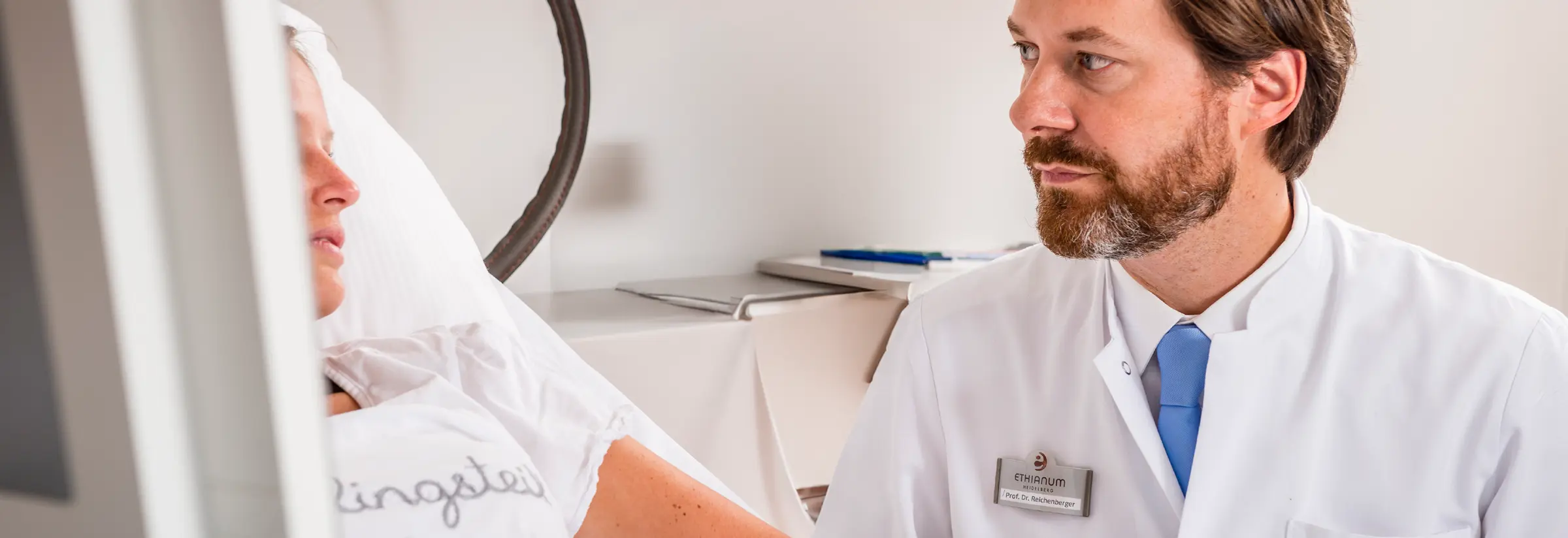
Reconstructive surgery
WOUND HEALING DISORDERS – CAUSES AND CONSERVATIVE TREATMENTS
Wound healing disorders can occur after surgery or major wound healing. They always have one thing in common: the wound simply does not want to close. Patients experience pain on or around the scar. Sometimes the scar of a wound does not close at all or it oozes or even suppurates. Infections are also a major issue in wound healing disorders, as they always jeopardise the health and well-being of the affected person.
Septic or aseptic wound healing disorders – precise diagnostics
Wound healing disorders can have several causes, which a specialist must diagnose and treat effectively. Pre-existing conditions such as diabetes, venous or vascular diseases and infections can lead to a wound healing disorder. Smoking also favours the poor healing of wounds. A precise diagnosis is essential in the treatment of wound healing disorders.
Doctors differentiate between septic and aspetic wound healing disorders:
- Aspetic wound healing disorder
Aspetic wound healing disorders are not caused by germs. Rather, reduced blood flow to the skin can lead to the wound edge dying off. It can also happen that wounds reopen after an operation, for example because there is too much tension on the suture. A reaction to intolerances should also not be underestimated. These can be due to the active ingredients in the wound dressings, for example, which then have a counterproductive effect and prevent the wound from healing. - Septic wound healing disorder
Doctors speak of a septic wound healing disorder when germs in the wound prevent healing. Every open wound is an invitation for germs and bacteria. In a septic wound healing disorder, these classic pus and putrefactive pathogens attack the open injury and prevent it from healing.
TREATING WOUND HEALING DISORDERS – SUCCESS THROUGH PLASTIC RECONSTRUCTIVE SURGERY
Classic conservative vacuum therapy is often used for wound healing disorders. It achieves the greatest possible sterility and is therefore the optimal preparation of a wound in wound healing therapy. In vacuum therapy, the wound is surgically cleaned and closed with a sponge. A film seals the wound area. A pump is used to create a vacuum under the film. The wound secretion is continuously sucked out. The wound must be checked after five days. If the germs have now been defeated, the wound is closed by surgery.
However, if vacuum therapy is not successful, our plastic reconstructive surgery experts can help. In order for wounds to heal, there are two main surgical procedures for treating wound healing disorders:
- Skin grafting: The body’s own skin is specially prepared and transplanted onto the wound. Even if only part of the skin grows in, it facilitates healing
- Skin flap grafting: Along with the skin, the underlying tissue that is supplied with blood is also moved or transplanted from other parts of the body in order to close the wound. Blood vessels are partially reconnected by microsurgery in order to optimise blood circulation
Our commitment to research demonstrates how important the treatment of wound healing disorders is to us. In our research laboratory, national and international specialists and physicians are working on the treatment and optimisation of wound healing disorders.
If you would like to find out more about our research, you have come to the right place!
